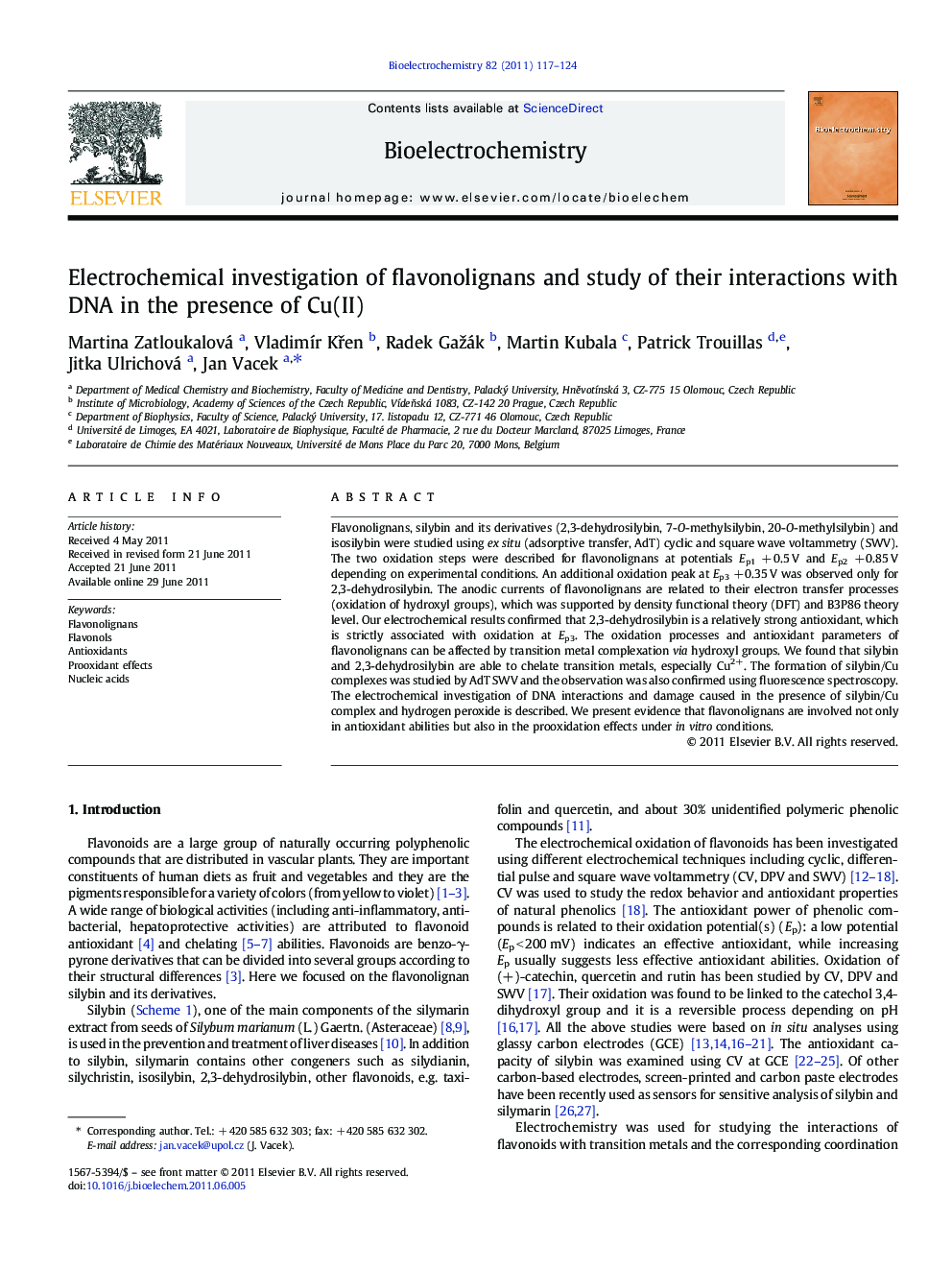| Article ID | Journal | Published Year | Pages | File Type |
|---|---|---|---|---|
| 1268140 | Bioelectrochemistry | 2011 | 8 Pages |
Flavonolignans, silybin and its derivatives (2,3-dehydrosilybin, 7-O-methylsilybin, 20-O-methylsilybin) and isosilybin were studied using ex situ (adsorptive transfer, AdT) cyclic and square wave voltammetry (SWV). The two oxidation steps were described for flavonolignans at potentials Ep1 + 0.5 V and Ep2 + 0.85 V depending on experimental conditions. An additional oxidation peak at Ep3 + 0.35 V was observed only for 2,3-dehydrosilybin. The anodic currents of flavonolignans are related to their electron transfer processes (oxidation of hydroxyl groups), which was supported by density functional theory (DFT) and B3P86 theory level. Our electrochemical results confirmed that 2,3-dehydrosilybin is a relatively strong antioxidant, which is strictly associated with oxidation at Ep3. The oxidation processes and antioxidant parameters of flavonolignans can be affected by transition metal complexation via hydroxyl groups. We found that silybin and 2,3-dehydrosilybin are able to chelate transition metals, especially Cu2+. The formation of silybin/Cu complexes was studied by AdT SWV and the observation was also confirmed using fluorescence spectroscopy. The electrochemical investigation of DNA interactions and damage caused in the presence of silybin/Cu complex and hydrogen peroxide is described. We present evidence that flavonolignans are involved not only in antioxidant abilities but also in the prooxidation effects under in vitro conditions.
Graphical abstractFigure optionsDownload full-size imageDownload as PowerPoint slideHighlights► Flavonolignans were studied using ex situ (adsorptive transfer) cyclic and square wave voltammetry. ► The anodic currents of flavonolignans are related to their electron transfer processes (oxidation of hydroxyl groups). ► Antioxidant activity of 2,3-dehydrosilybin is higher than in case of other flavonolignans (silybin and its derivatives) but lower than for flavonols such as quercetin and its glycosides. ► We present evidence that flavonolignans are involved not only in antioxidant abilities but also in the prooxidation effects.
